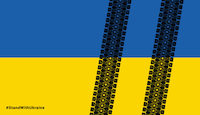
Chicago City Council Weighing Push To Allow Digital Billboards Along Famed Riverwalk
June 26, 2024 by Dave Haynes
A committee is set to meet today in Chicago to consider a push to relax restrictions that prevent digital billboards to be lit up within 100 feet of that city’s famous waterways and riverwalks.
Restrictions currently block billboards from being placed and operated within 100 feet of waterways like the Chicago Riverwalk. In the same way many, many cities trying to fund operations by allowing DOOH/OOH advertising into mass transit systems, advertising concessions for displays along the busy riverwalk would generate revenues through advertising share agreements or guarantees.
“We’re not here to take away from what makes the Riverwalk amazing, but to add to the Riverwalk,” one city councillor suggests, in supporting the plan.
How billboards would add to an area pretty much escapes me, and I am in the industry that makes and markets the tech! And no, spinning bourbon bottles and cars that seem to almost drive right out of a screen through visual illusions wouldn’t make a walk or boat ride better. Leave it alone.
The river is the one that winds through the central area, near the lake, and known for things like being turned green on St. Patrick’s Day.
Whatever comes out of the committee would still have to clear full city council approval.
Photo at top purely my cheeky concept.




As an industry with a history of rogue and renegade operators, permit less builds and often operating outside the lines, the image you present is not helpful for making a case. For years the Chicago River was ignored and an eyesore. Now it has been revitalized and commercialized to a large extent. A smart DOOH program (no not spectaculars hanging from bridges) can present the city with many benefits- not to mention- badly needed revenues for Chicago. Let’s try to be a solution as an industry.
Hi Tony
The image is admittedly cheeky, but you kinda make the case for it by mentioning the history of rogue operators. Yes, there may well be ways to more elegantly integrate displays into the architecture, but you have to assume media companies are more concerned about their screens being noticed than they are with how they mesh with Chicago’s much-admired architecture. And even displays that are designed to somewhat fit in are still at the mercy of the creative files running on them.